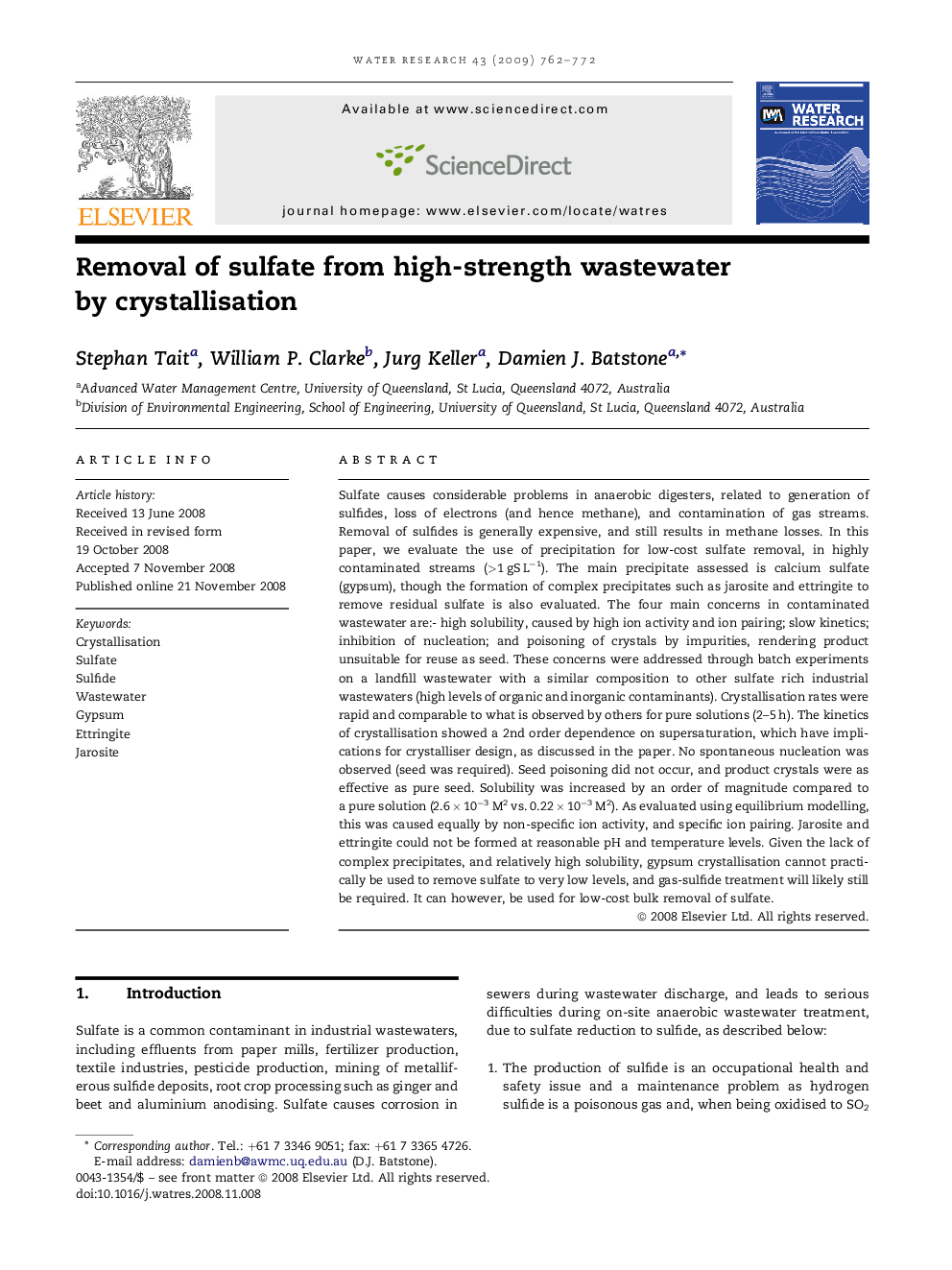| کد مقاله | کد نشریه | سال انتشار | مقاله انگلیسی | نسخه تمام متن |
|---|---|---|---|---|
| 4485293 | 1316947 | 2009 | 11 صفحه PDF | دانلود رایگان |

Sulfate causes considerable problems in anaerobic digesters, related to generation of sulfides, loss of electrons (and hence methane), and contamination of gas streams. Removal of sulfides is generally expensive, and still results in methane losses. In this paper, we evaluate the use of precipitation for low-cost sulfate removal, in highly contaminated streams (>1 gS L−1). The main precipitate assessed is calcium sulfate (gypsum), though the formation of complex precipitates such as jarosite and ettringite to remove residual sulfate is also evaluated. The four main concerns in contaminated wastewater are:- high solubility, caused by high ion activity and ion pairing; slow kinetics; inhibition of nucleation; and poisoning of crystals by impurities, rendering product unsuitable for reuse as seed. These concerns were addressed through batch experiments on a landfill wastewater with a similar composition to other sulfate rich industrial wastewaters (high levels of organic and inorganic contaminants). Crystallisation rates were rapid and comparable to what is observed by others for pure solutions (2–5 h). The kinetics of crystallisation showed a 2nd order dependence on supersaturation, which have implications for crystalliser design, as discussed in the paper. No spontaneous nucleation was observed (seed was required). Seed poisoning did not occur, and product crystals were as effective as pure seed. Solubility was increased by an order of magnitude compared to a pure solution (2.6 × 10−3 M2 vs. 0.22 × 10−3 M2). As evaluated using equilibrium modelling, this was caused equally by non-specific ion activity, and specific ion pairing. Jarosite and ettringite could not be formed at reasonable pH and temperature levels. Given the lack of complex precipitates, and relatively high solubility, gypsum crystallisation cannot practically be used to remove sulfate to very low levels, and gas-sulfide treatment will likely still be required. It can however, be used for low-cost bulk removal of sulfate.
Journal: Water Research - Volume 43, Issue 3, February 2009, Pages 762–772